Labrador – The Big Land
(May 30 – June 8, 2015)
Labrador is a very unique stretch of land. It is incredibly remote and sparsely populated. Its raw and untamed wilderness stretch out as far as the eye can see without a single sign of human interference and it makes you feel really insignificant and small. Here one could walk into the wilderness and be utterly and completely alone, you wouldn’t even really have to walk very far. There is an indescribable appeal and beauty to the vastness, the wildness and starkness of the landscape of Labrador. There is so much to see and experience, and so much we have not. Without a doubt Labrador has made a very big impact on us and has contributed hugely to the adventurous part of our journey so far.
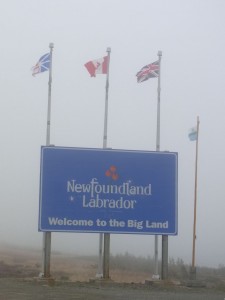 Welcome to the Big Land
Welcome to the Big Land
It’s hard not to continuously compare different aspects of our daily lives between the places we have been and our most recent home, Germany. One of the things that tend to be high on the list are the quality of the roads. Germany has a really good infrastructure and although people complain loudly and frequently, the roads are really well, and often maintained. However, generally or more correctly exactly the repairs happen when everyone wants to go on vacation. In Canada, so far, the roads have been, well, something of an adventure in themselves, depending on how adventurous you happen to be. So it was rather surprising that when we left the ferry terminal in Blanc Sablon we turned onto a road that immediately demanded attention. It is fantastic! I mean really fantastic. You could fall in love with such a road. 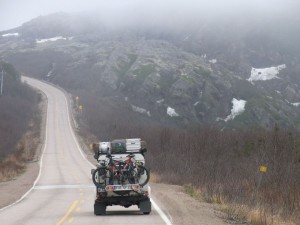 Smooth as silk, curves in all the right places, no horrible bumps or hunches, a real dream! But then we realized we weren’t in Labrador, we were actually in Quebec. But as we approached the sign welcoming us to Labrador, the Big Land, we noticed something quite remarkable. The beautiful, road stopped directly and immediately at the border. The road on the Labrador side was just as good as some other roads we have experienced, meaning bad, but if we concentrated really hard we could look on the bright side! We would at least get some practice for what is probably the longest gravel road in Canada.
Smooth as silk, curves in all the right places, no horrible bumps or hunches, a real dream! But then we realized we weren’t in Labrador, we were actually in Quebec. But as we approached the sign welcoming us to Labrador, the Big Land, we noticed something quite remarkable. The beautiful, road stopped directly and immediately at the border. The road on the Labrador side was just as good as some other roads we have experienced, meaning bad, but if we concentrated really hard we could look on the bright side! We would at least get some practice for what is probably the longest gravel road in Canada.
Trans Labrador Highway
To say that we were excited about experiencing what this road has to offer would be a bit of an understatement. I was practically chomping at the bit in excitement and at the same time quite nervous too. How would the Landy hold up? We haven’t really tested him yet. Is the suspension going to be ok? Will the sometimes-squeaky fan belt decide that somewhere half way would be a good time to snap? Land Rovers are notorious for marking their territory by dropping a few drops of oil now and then, so how is the oil level? We replaced a ball-joint before leaving Nova Scotia, how do the others look, any sign of wear?
So when it came time to start the gravel portion at Red Bay we attacked it like a nearsighted granny on her way to Sunday church services. That is, with a top speed of 35 km/h. The locals blew past like rally-car drivers, spitting gravel and throwing up dust clouds that could quite possibly be seen from space. We cringed at every stone impact thinking the next would definitely leave a nice crack in our windshield and quite a large dent in our budget. We made sure that the windows were up so that we only metaphorically and not in reality had to eat their dust as they zoomed by. But after some time driving we became more comfortable with how the Landy reacted and so our top speed increased to almost 60 kms (Max is technically 70)! However, it did vary quite dramatically with the quality of the road and the size of the potholes, no need to tempt fate. We also noticed that it’s a heck of a lot more tiring to actually have to concentrate on driving! Checking out the scenery meant risking hitting an exceptionally large pothole or a large sharp piece of blasting rock, which are often scraped up by the grader when they are out in spring fixing the roads, and risk a potential flat. So we switched up driver a bit more often to give each other a break.
Some people would call this stretch of road boring and the landscape monotonous but we think it is everything but. The landscape continuously changes, especially in the south; its hilly and then mountainous, and then flat dotted with lakes, and then suddenly mountainous again with raging rivers. The trees give way to wetlands, which give way to tundra, which give way to moors, and then back again. Almost every corner or around every hill the landscape changed in not too subtle ways. It’s like someone took several jigsaw puzzles of landscapes and randomly put the pieces together.
“Don’t pass a gas station!”
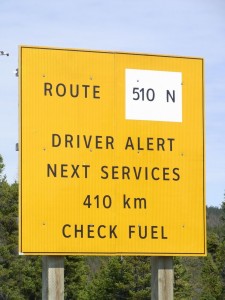 Even before we arrived in Labrador everyone was warning us not to pass a gas station without topping up or even better take an extra canister. We thought quite a long time about whether we should do that or not, after all we’ve heard of other travelers who have extra large tanks or 2 reserve canisters or even both. We thought perhaps it might be a little silly of us to head onto the highway without any of the extras that almost everyone was warning us to have with us. Though with our driving style we can get around about 600km with a full tank, and we simply can’t believe that there won’t be anything for that distance. We are after all in Canada and not somewhere in the Kalahari; at least that’s what we were thinking. As it turns out the longest distance between two gas stations is 410 km, that is, between Port Hope Simpson and Happy Valley/Goose Bay. We can make that no problem! It is however, a quite unique feeling to pass a sign warning you that there is nothing for the next 410km, and there really is absolutely nothing. No house, no little cottages, which we are used to seeing in other areas, nothing except a whole bunch of little quarries that they use to get stone to build and fix the highway, oh and one or two highway maintenance depots, other than that just wilderness as far as the eye can see. It’s a pretty strange feeling travelling this gravel road for 410km with a top speed of 60 km/h, not something you do every day and quite an adventure to say the least.
Even before we arrived in Labrador everyone was warning us not to pass a gas station without topping up or even better take an extra canister. We thought quite a long time about whether we should do that or not, after all we’ve heard of other travelers who have extra large tanks or 2 reserve canisters or even both. We thought perhaps it might be a little silly of us to head onto the highway without any of the extras that almost everyone was warning us to have with us. Though with our driving style we can get around about 600km with a full tank, and we simply can’t believe that there won’t be anything for that distance. We are after all in Canada and not somewhere in the Kalahari; at least that’s what we were thinking. As it turns out the longest distance between two gas stations is 410 km, that is, between Port Hope Simpson and Happy Valley/Goose Bay. We can make that no problem! It is however, a quite unique feeling to pass a sign warning you that there is nothing for the next 410km, and there really is absolutely nothing. No house, no little cottages, which we are used to seeing in other areas, nothing except a whole bunch of little quarries that they use to get stone to build and fix the highway, oh and one or two highway maintenance depots, other than that just wilderness as far as the eye can see. It’s a pretty strange feeling travelling this gravel road for 410km with a top speed of 60 km/h, not something you do every day and quite an adventure to say the least.
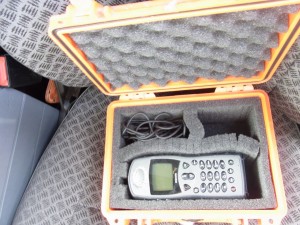 That we didn’t have any cell phone connection in Labrador came as no surprise to us since we haven’t had any since Newfoundland anyway. We figured if anything happened someone would stop and we could just use a Canadian cell phone to make a call to the CAA or something. That there isn’t any cell phone connection at all along the highway was first brought to light in Happy Valley when someone mentioned getting a Satellite phone for the rest of the trip. We figured it would cost a fortune, but surprisingly enough it’s a free service. We couldn’t believe it at first but you simply have to go to the Hotel North II fill out a piece a form and they give you a phone to use for emergencies. We just had to drop it off in Labrador City when we got there. So with our fancy Sat phone we set out for Labrador City knowing that if anything happened we could call for help and not wait first for someone to drive by.
That we didn’t have any cell phone connection in Labrador came as no surprise to us since we haven’t had any since Newfoundland anyway. We figured if anything happened someone would stop and we could just use a Canadian cell phone to make a call to the CAA or something. That there isn’t any cell phone connection at all along the highway was first brought to light in Happy Valley when someone mentioned getting a Satellite phone for the rest of the trip. We figured it would cost a fortune, but surprisingly enough it’s a free service. We couldn’t believe it at first but you simply have to go to the Hotel North II fill out a piece a form and they give you a phone to use for emergencies. We just had to drop it off in Labrador City when we got there. So with our fancy Sat phone we set out for Labrador City knowing that if anything happened we could call for help and not wait first for someone to drive by.
The End of an Era
The highway, with the exception of 11 km, from Happy Valley/Goose bay to Labrador City is paved. Soon the last 11 km will be paved too and construction has begun to pave the south portion of the Trans Labrador Highway all the way to Red Bay. It should be completed within the next 5 years, and then the longest gravel highway in Canada will cease to exist. We are both glad to have had the opportunity to experience the gravel portion, even though it wasn’t the full 1000 km it once was, before the rest is gone too.
Where have all the Caribou Gone
We imagined what it would be like to see herds of caribou crossing the terrain that seemed to be made especially for them, but we saw only signs telling us that hunting them is illegal. A lady told us she saw a lynx, and another mentioned something about a lone wolf being spotted. But as we drove along the highway and on our occasional hikes at the small villages along the way we saw nothing but a vast and somewhat frighteningly empty landscape.
In our entire travels through Labrador the only sight of Caribou were on the no hunting signs posted along the highway. The George River herd was estimated at seven hundred thousand animals at its height in the 1980’s. Their migration south would block the highway for hours, what a sight that would have been to see! Now, though, after a steep decline in numbers they have lost 98% of their population! With only about 20,000 animals in the herd it’s no wonder we didn’t see any as we had hoped, such a small number of animals in such a vast land could easily be missed, it may also have been that we were not here during their migration times. The cause of the decline depends on whom you ask as a conservation officer who we met near Labrador City told us. From a natural cycle to dam building for hydro-electricity, to forestry work, to commercial over hunting everyone is blaming everyone for the decline. There is even Inuit mythology that tells of a Spirit who cares for the caribou and will withhold them if they are not properly respected. Never the less they are not here to witness as they sweep across the land in their hundreds of thousands on their route south. The time when that spectacle could be witnessed is gone, relegated to history, and end of an era too perhaps, but hope is not lost. Careful management may yet see an increase in numbers perhaps even to the levels it once was but that will take decades if not longer.
It wasn’t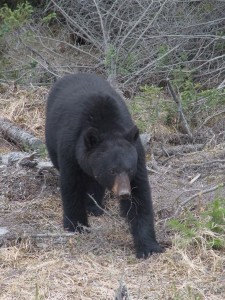 until after visiting Cartwright that we saw our first wildlife in the form of two Black Bears. The first one bolted into the woods as soon as we stopped the car. We cursed our luck and lack of photographic evidence that there is actually wild life in Labrador. The second bear we saw acted quite strangely as we pulled over to observe it and take a couple of pictures. Instead of bolting into the woods, as the first one did, this one slowly moved parallel to the road. Photo! Yes! Now we actually have proof. That not being enough, now that we have actually seen a bear after so many days of nothing, not even a squirrel! I whistled and called to it just like the stupid tourists that I normally make fun of, so that it would turn it’s head and we could maybe get that perfect National Geographic shot. And it did turn its head, and then it turned more than it’s head. The head, with the rest of the bear following, started to slowly approach the car. The cat-calls, hoots, howls, growls and sounds of several other barnyard animals that I could think of suddenly didn’t seem to be all that much of a good idea any more.
until after visiting Cartwright that we saw our first wildlife in the form of two Black Bears. The first one bolted into the woods as soon as we stopped the car. We cursed our luck and lack of photographic evidence that there is actually wild life in Labrador. The second bear we saw acted quite strangely as we pulled over to observe it and take a couple of pictures. Instead of bolting into the woods, as the first one did, this one slowly moved parallel to the road. Photo! Yes! Now we actually have proof. That not being enough, now that we have actually seen a bear after so many days of nothing, not even a squirrel! I whistled and called to it just like the stupid tourists that I normally make fun of, so that it would turn it’s head and we could maybe get that perfect National Geographic shot. And it did turn its head, and then it turned more than it’s head. The head, with the rest of the bear following, started to slowly approach the car. The cat-calls, hoots, howls, growls and sounds of several other barnyard animals that I could think of suddenly didn’t seem to be all that much of a good idea any more. 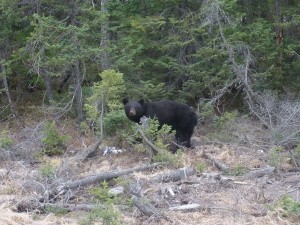 Now would be a good time to leave before the bear, and more importantly the head of the bear with all those sharp teeth popped in the window and asked politely for some mustard to go with Frederike. In comparison to me, she sat calmly wondering if the bear might be ill, probably regretting not having packed her stethoscope and looking at me if I had perhaps lost my mind with all the funny noises I was making. I thought for a moment that she might actually get out and take it’s temperature or something else a vet would do. Later we found out that the second bear was most likely being fed by road workers, which accounted for his quite unusual behavior.
Now would be a good time to leave before the bear, and more importantly the head of the bear with all those sharp teeth popped in the window and asked politely for some mustard to go with Frederike. In comparison to me, she sat calmly wondering if the bear might be ill, probably regretting not having packed her stethoscope and looking at me if I had perhaps lost my mind with all the funny noises I was making. I thought for a moment that she might actually get out and take it’s temperature or something else a vet would do. Later we found out that the second bear was most likely being fed by road workers, which accounted for his quite unusual behavior.
Planning versus Reality
Since Labrador has really only the one main road we would, quite conveniently, pass just about every community along the way to Happy Valley/Goose Bay. So visiting them all at least the ones we could get to by a road, that shouldn’t take us too far out of our way. Looking at the map of Labrador you can see hundreds, if not thousands of lakes and rivers along the way, we figured that we wouldn’t have a problem finding a place to camp here, because you know there would have to be a boat launch or access road or some small road leading to lots of those lakes giving us unlimited access to awesome camping spots along the way. At least of course that was what we were thinking anyway. Reality, however, has a great way of intruding on the fantasy planning that you make for yourself in often quite unkind ways.
A problem that seems to continuously plague us, is finding a suitable camping site. Quite honestly the constant search can annoy the hell out of us, along with the weather and differing moods has led to some short tempers and a bit of general snappishness, which on the whole, is a quite uncommon event for us. But that is something you have to deal with when on such an adventure as this since it has quite different challenges than at home.
While in the more civilized or tourist areas of the country the choice has either been to search for a free place to camp, and accept the time and energy it takes to do so, or look for the next campground and accept the costs (if its even open). In Labrador they don’t give you a choice, there aren’t any, with the exception of one or two in the south. You have to find a spot to camp but the finding gets a bit trickier, or you have to be way less picky. You’ve got your choice between ugly pull-off directly next to the highway, foreboding abandoned quarry (if you can find one that hasn’t been blocked off), or driving to the next town and looking about there for that one road that someone decided to build that ends in a clearing over looking a lake, bay or river with a fire pit and a picnic table. At this point I should mention that the aforementioned road, after quite extensive searching since starting our adventure, does not in anyway exist, and probably never will (why would someone build such a road to begin with?), but we look for it and hope and plan on finding it someday, somewhere.
We may not have found the picture perfect spot to camp, but we did find some really nice places along the way with the help from some very friendly folks in Labrador. All in all, a rather good and adventurous, camping experience in the Big Land.
A Strange Phenomenon
One evening while on one of our searches for a spot to camp, we stumbled upon a road that led us to the local landfill. I use the term landfill in its most loose definition, basically a clearing in the woods where everyone throws their garbage and leave their old cars to rot. It was total chaos and plastic bags and other things were strewn all over the place looking more like a garbage truck had exploded than what a landfill would, should, or in a nightmare look like. Someone had opened the buffet for the seagulls and they were fighting furiously over the choicest morsels; a ground hog was rummaging around seeming to be looking for something in particular until we disturbed him and he waddled with indignation quickly off to hide amongst the trash. Apparently bears also come to join the buffet of leftovers on occasion too, so we were told later. Not exactly the best place to camp for the night. In fact we could think of many better places to camp than at a landfill, so we turned around and left the seagulls to their bickering and the groundhog to his tireless search among one of the sad hallmarks of “civilization”.
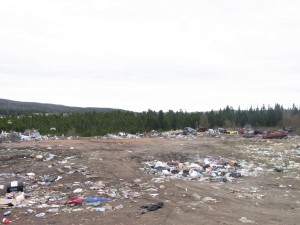 It seems to us that the less populated an area is the less the people seem to think about garbage. We get the feeling sometimes that its “Out of sight out of mind” or since there is so much space just throw it anywhere and everywhere. We’ve witnessed this phenomenon in a few of the sparsely populated regions we have visited, it’s by far not only in Canada, but in certain places in Europe as well. In Germany you separate the garbage into organics, plastics, tins, bottles (green, white, brown), paper, and finally household garbage. People don’t do it because they are all tree huggers or environmental crazies, they do it because it costs money not to. The more non-recyclable garbage you have the more your garbage collection costs each month. The problem in sparsely populated areas, we think, is that they don’t seem to be aware of the garbage that its something that only slowly develops. It may also be that they simply don’t have the infrastructure available to provide recycling of any kind. It’s also probably almost impossible to catch people who load their garbage in the back of their truck and simply dump it wherever they please to save a few bucks. So better to have one spot that looks like an exploded garbage truck than hundreds of small spots, we surmised.
It seems to us that the less populated an area is the less the people seem to think about garbage. We get the feeling sometimes that its “Out of sight out of mind” or since there is so much space just throw it anywhere and everywhere. We’ve witnessed this phenomenon in a few of the sparsely populated regions we have visited, it’s by far not only in Canada, but in certain places in Europe as well. In Germany you separate the garbage into organics, plastics, tins, bottles (green, white, brown), paper, and finally household garbage. People don’t do it because they are all tree huggers or environmental crazies, they do it because it costs money not to. The more non-recyclable garbage you have the more your garbage collection costs each month. The problem in sparsely populated areas, we think, is that they don’t seem to be aware of the garbage that its something that only slowly develops. It may also be that they simply don’t have the infrastructure available to provide recycling of any kind. It’s also probably almost impossible to catch people who load their garbage in the back of their truck and simply dump it wherever they please to save a few bucks. So better to have one spot that looks like an exploded garbage truck than hundreds of small spots, we surmised.
A Question of Pride and Respect
Almost everyone we met in Labrador was proud of their Big Land, so proud in fact that the idea of two tourists looking to buy a Newfoundland and Labrador sticker, you know the, ahem, “official” provincial flag, to put on their vehicle was met with some strange looks. They have their own flag here in Labrador, and there isn’t one shop that sells the other flag or actually anything that may have anything to do with the island referred to as Newfoundland. We bought a Labrador flag, of course, and will proudly display it on our car. It’s a proud flag with symbology and meaning. We met many people on our travels through Labrador and without exception they were incredibly welcoming, friendly and genuinely proud to be a “Labradorian.” And so while a section of the population displayed their pride so openly, a part of another section has seemed to have lost not only their pride in their land, but also their heritage and perhaps even themselves.
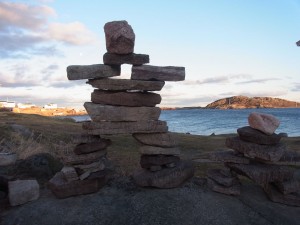 Our visit to Happy/Valley Goose Bay, and in particular Northwest River, confronted us with the often-avoided tragic societal problems of the indigenous peoples of Canada. We didn’t go looking for it, but we didn’t turn away from it either. It’s a serious matter affecting many lives and not something to be taken lightly or as a tourist destination. Indigenous people especially their belief systems, spirituality and traditions interest Frederike very much and so she wanted very much to see what a reservation was. The concept of a reservation was difficult to describe and I sometimes get confused myself, knowing from documentaries and personal experience that one reservation can be very, very different from another. So with some trepidation we decided to visit the reservation at North West River – Sheshatshiu. We both thought it would be disrespectful to the people living at the reservation to come in there like tourists going on a park safari, so it was clear that we would not take any photos. So we drove through it in relative silence and have only the memory and emotions that the visit evoked in us. Apathy. Broken. Defeated. Hopelessness. Anger. Those are the words that came to mind as we drove through seeing the garbage filled yards, the ruined or partially boarded up houses, and the modern school with most of its windows cracked or smashed by stones.
Our visit to Happy/Valley Goose Bay, and in particular Northwest River, confronted us with the often-avoided tragic societal problems of the indigenous peoples of Canada. We didn’t go looking for it, but we didn’t turn away from it either. It’s a serious matter affecting many lives and not something to be taken lightly or as a tourist destination. Indigenous people especially their belief systems, spirituality and traditions interest Frederike very much and so she wanted very much to see what a reservation was. The concept of a reservation was difficult to describe and I sometimes get confused myself, knowing from documentaries and personal experience that one reservation can be very, very different from another. So with some trepidation we decided to visit the reservation at North West River – Sheshatshiu. We both thought it would be disrespectful to the people living at the reservation to come in there like tourists going on a park safari, so it was clear that we would not take any photos. So we drove through it in relative silence and have only the memory and emotions that the visit evoked in us. Apathy. Broken. Defeated. Hopelessness. Anger. Those are the words that came to mind as we drove through seeing the garbage filled yards, the ruined or partially boarded up houses, and the modern school with most of its windows cracked or smashed by stones.
We don’t want to give anyone the impression that it is like this in every reservation as we have only visited this one, so we can’t speak for any others.
We met a native lady after our visit and talked several hours with her about the proud heritage of the native peoples here. How they respected the land and the animals and wasting anything was considered a grievous sin that would incur the wrath of the spirits who watched over the animals and the land, and how that conflicted so dramatically with what we witnessed. They had pride in their heritage, their land and their culture she explained. That was, of course, all before European influence, before the forced residential schools took children away from their families and tried to educate the Innu/native out of them, before a largely nomadic people were told they were to settle and where and how they were to settle.
Even people who still respect the old ways still litter; their excuse being that the little damage they do is nothing in comparison to what the big corporations have done – all in the name of progress. It’s very easy to play the blame game but we asked our difficult questions as delicately and as openly as we dared and received the answers to our questions as much as she was comfortable or able to give.
Their way of life completely and irrevocably changed, domesticated. Their self-respect and pride removed leaving an empty hole that seems to be too easily filled by substance abuse. A culture, where waste did not exist, replaced with one where almost everything you buy comes wrapped in some form of waste. They have a truly amazing history and rich culture to be proud of. If only those who have lost their way could see it and regain some of what was lost.
The talk and visit occupied our thoughts and shadowed our visit to Happy Valley/Goose Bay somewhat but I wouldn’t say it was a negative experience, just very intense and emotional. This is a very complex and delicate theme and there is much left unsaid but it is a part of this land and it made a very big emotional impact on us.
Our trip through Labrador was nothing like we expected, in fact we really didn’t know what to expect, we thought more about the experience of the gravel road only, that it would simply be that experience, but as it turned out, it was so much more. It was a trip filled with kindness and incredible hospitality, thought provoking talks about sensitive and painful topics and truly amazing landscapes and natural beauty! Labrador, You have won a special place in our hearts.
A Special Place a Special Thank You
We met a lot of great people on our travels through Labrador and would like to thank a special few: All the staff at Alexis hotel in Port Hope Simpson for letting us hang out in your lobby, park for the night and for the hot showers. Jason, in Cartwright for the great conversation, delicious food and giving us a bed for the night, we hope you get to Fiji soon! The Mayor of Happy Valley/Goose Bay, Jamie Snook, for the good talk and great tips of where to stay, oh and stay injury free at the next soccer tournament! The ladies at the North West River interpretation center for your stories and honest conversation. Chuck Porter and Family for letting us camp at your cottage, the delicious Toutons, and the incredible thought provoking conversations. Wallace and Theresa for the hot drinks and warm spot to have breakfast on that cold and snowy June 7th Morning.
More Photos on Flickr: Labrador

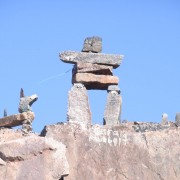
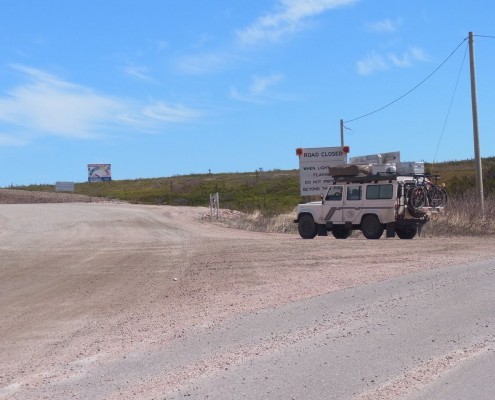
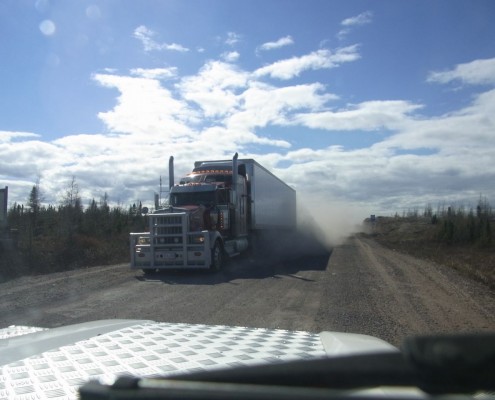
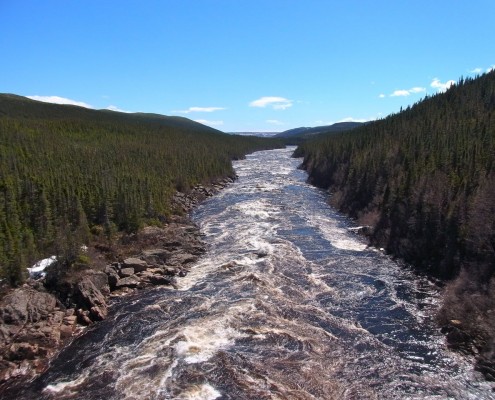
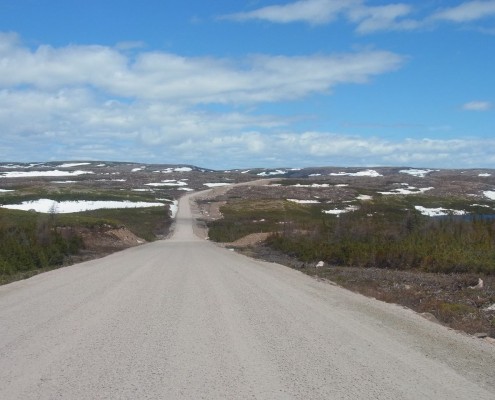
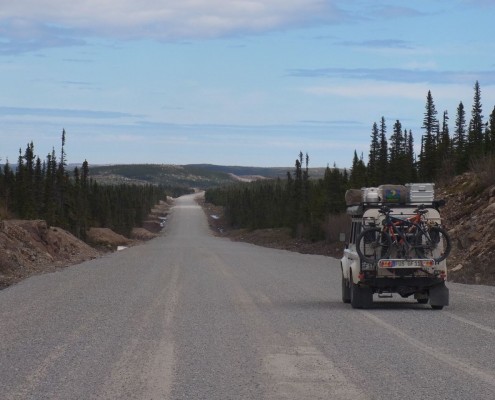
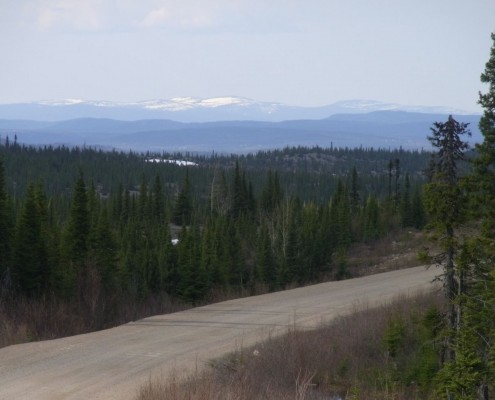
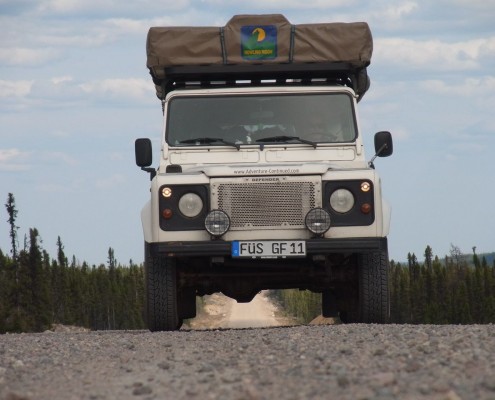
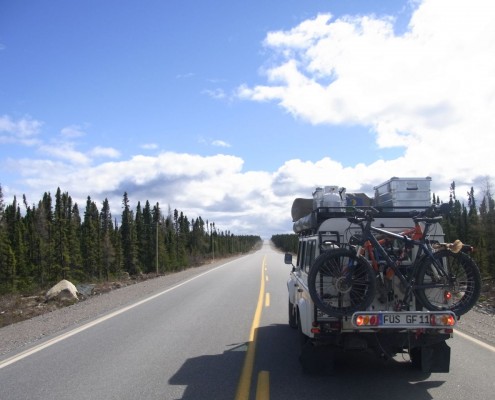
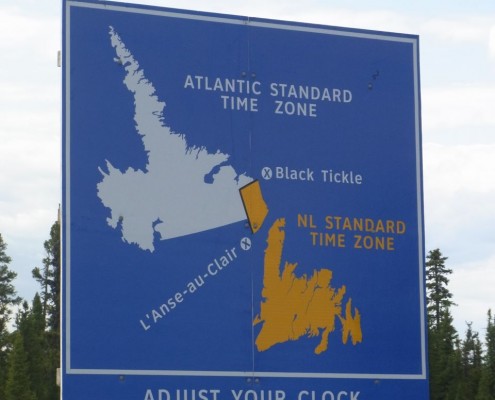
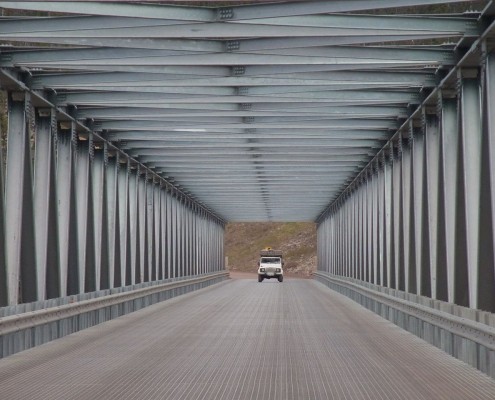
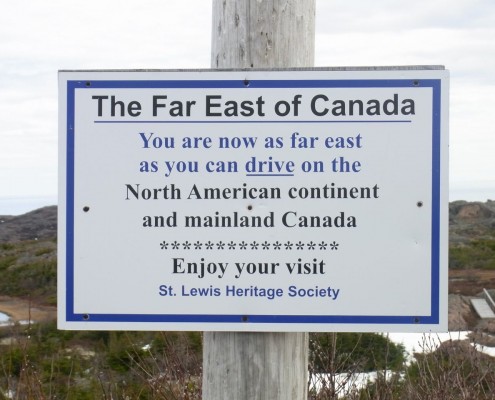
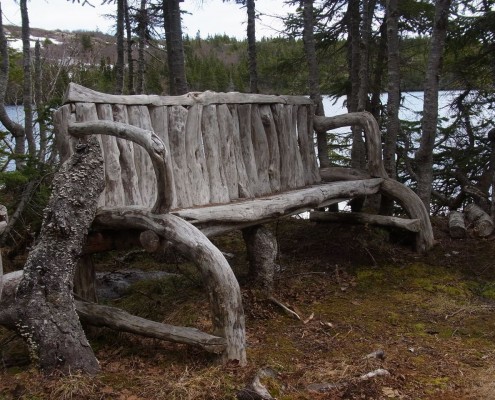
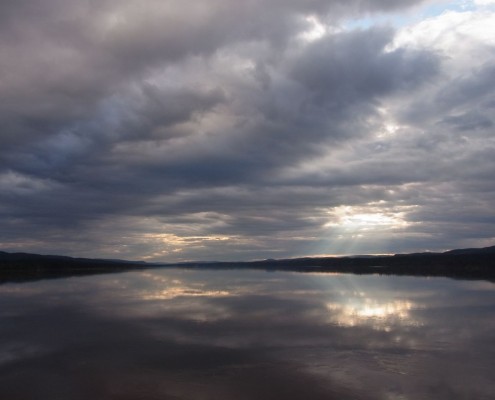
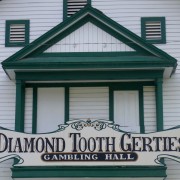
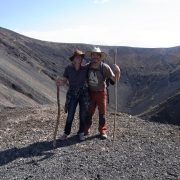
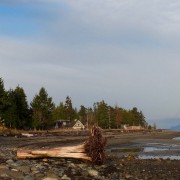
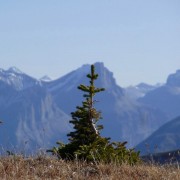
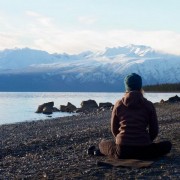
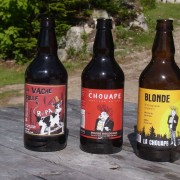
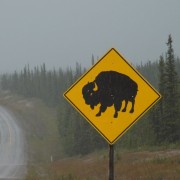



Hi guys,
What a great write up on your trip to Labrador. Sounds like The Big Land left quite an impact on you. Things that we take for granted and complain about….you guys embraced. I think when I take my next trip down over the gravel road, I will look at things differently and I will think of you both.
Safe travels:)
Wallace and Theresa
Hi Theresa and Wallace,
Thanks so much for your comment, it means a lot to us that you found it interesting especially since you live in Labrador. 😉
Cheers
Gary and Frederike